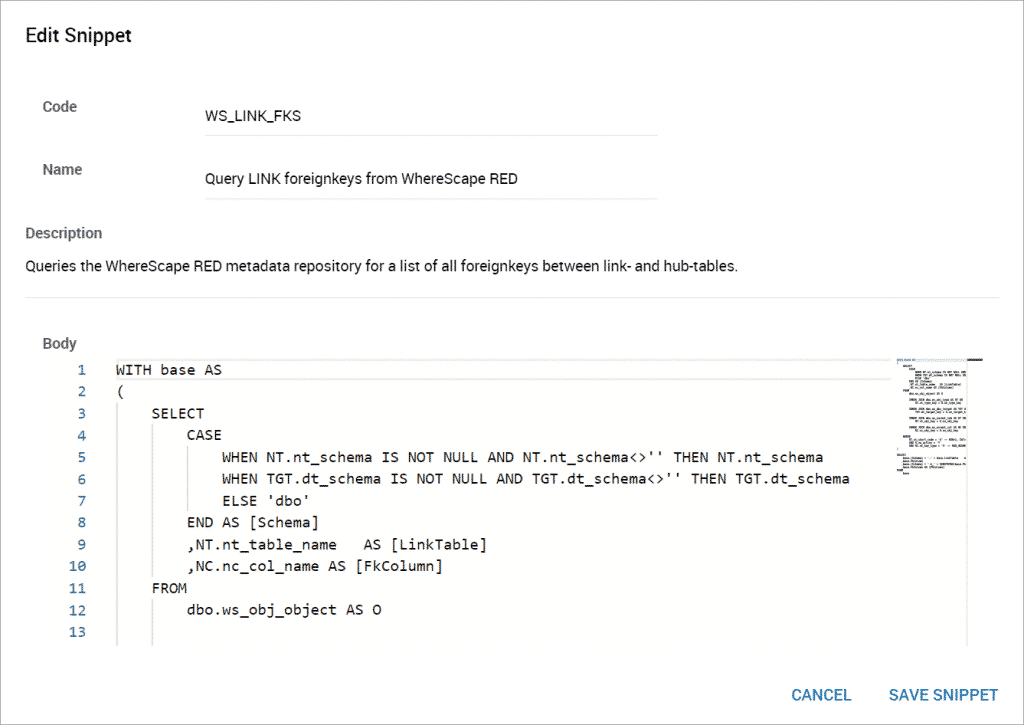-
Users Handbook
-
-
-
- Intro & Basics
- All Objects have Descriptions
- Check for unused procedures
- Compiled Procedures up to date
- Invalid Source Layers
- Required Columns
- Check for abnormally ended Jobs
- Check for blocked Jobs
- Check for disabled Tasks
- Check for duplicate tasks in different Jobs
- Check for duplicate tasks in same Job
-
-
-
Administrators Handbook
-
- Register URL
- Configure SSL/HTTPS
- Configure Proxy-Server
- How to edit the appsettings.json file
- System Settings
- Global Parameters
- Allow Service Account to Logon as a Service
- LDAP & SSO Authentication
- Migrating Testcases and Configuration
- Licenses Management
- Manual Configuration
- Exposing the BiG EVAL REST API to other Network Segments
-
Developers Handbook
-
Known Problems
-
Demo Virtual Machine
-
Release Notes
-
General
Snippets
- Home
- Users Handbook
- Scripting
- Scripting Features
- Snippets
Snippets are character strings that are centrally managed. This makes them reusable in probe queries and scripts.
Creating a Snippet
- Click on “Environment” -> “Snippets” in the main navigation of BiG EVAL.
- Click on “Create Snippet”.
- Enter the following inputs:
- Code: A unique name makes the snippet recognizable and referencable from scripts.
- Name: A descriptive and human-readable name.
- Category: (available since Release 2.8.0) The category the snippet belongs to Use “Default” except you define an email-layout template.
- Description: Documentation or description of the snippet.
- Body: The snippet itself.
- Click on “Create Snippet”.
The following example snippet shows a large SQL-query to a WhereScape RED repository database. These long text-blocks are hard to handle within a testcase-script, because its size makes the script difficult to read and maintain.

Using a snippet in a Script
A snippet can be used in a testsuite- or testcase-script by the following line of code.
var myQuery = GetSnippet("WS_LINK_FKS");
The only parameter of the GetSnippet-Method is the Code of the snippet.
The method returns the snippets body as a System.String structure.
Table of Contents
